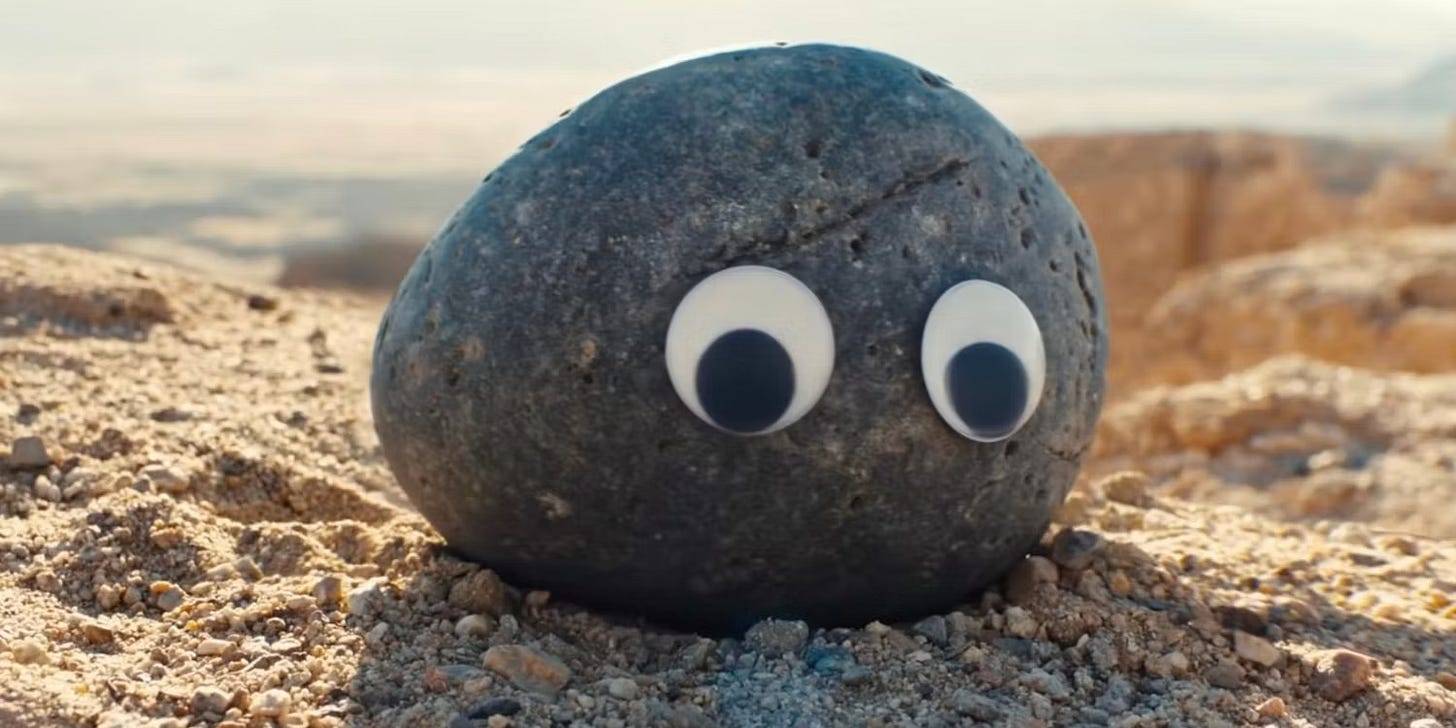Adding life to inanimate objects is something young children do early on. Two simple dots on a rock bring it to life and suddenly the rock has a name. In the movie Everything Everywhere at Once, Ke Huy Quan’s character Waymond goes around adding googly eyes to everything annoying his wife (Michelle Yeoh) to encourage humor and happiness into her life. In ScreenRant’s breakdown of symbolism in the movie writer George Lawly says, “The one way to withhold crushing existential dread is with googly eyes”. They aren’t wrong.

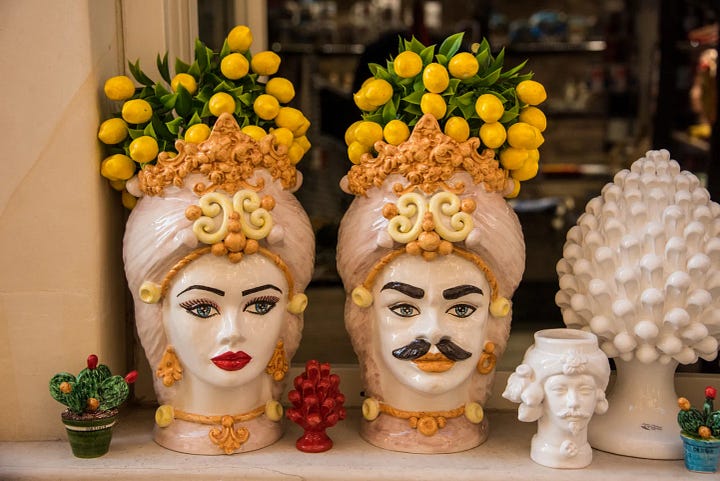
Drawing or sculpting a face onto objects is found all over the world and throughout history. There are versions found in Peru from the Moche civilization, Ancient Greece, and in the Chinese Han dynasty - all used primarily for funerals. In Sicily (and henceforth popularized by White Lotus) you can find face planters known as testa di moro, inspired by the story of a young Sicilian woman who beheaded her African lover upon learning about his wife and kids back home and turned his face into a basil planter. Clearly the perfect symbol for everything White Lotus 2.
Today many contemporary artists have continued to infuse objects with personality and emotion. These artists blur the line between form and function and remind us to find joy (or at least, reflection) in everyday objects. Read on for three ceramists from around the world that create unique and captivating objects with faces:
Samuel and Isaí Pineda | Cara de Planta (Mexico)

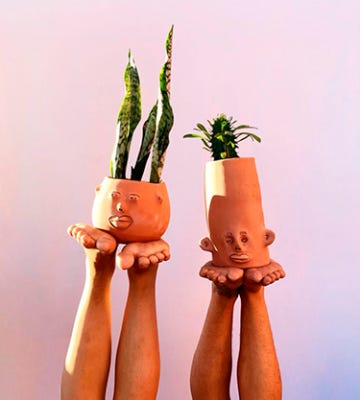

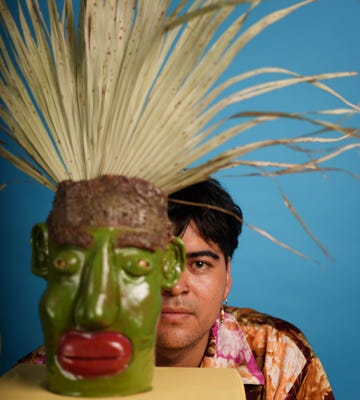
Samuel Pineda and his brother Isaí are the founders of Cara de Planta a ceramic studio with store in Roma Norte, CDMX. At Cara de Planta, every pot and planter has a unique face painted on it giving each piece its own personality. The Pinedas, originally from Oaxaca, are looking to modernize Mexican pottery, working with artists and local materials from all around Mexico including their home state, Oaxaca, as well as Puebla and Michoacán. Samuel also presented his latest ceramic collection at Art Week CDMX last month. Inspired by Guatemalan writer, Augusto Monterrosso’s short story, El Dinosaurio1, Pineda’s collection focused on how faces are something ever-present in our lives. As Pineda shared, “The face is very predominant in my sculptural development since through it I can combine and create emotions, visions, colors and textures to materialize what I dream and imagine.”
Anders Arhoj | Studio Arhoj (Denmark)
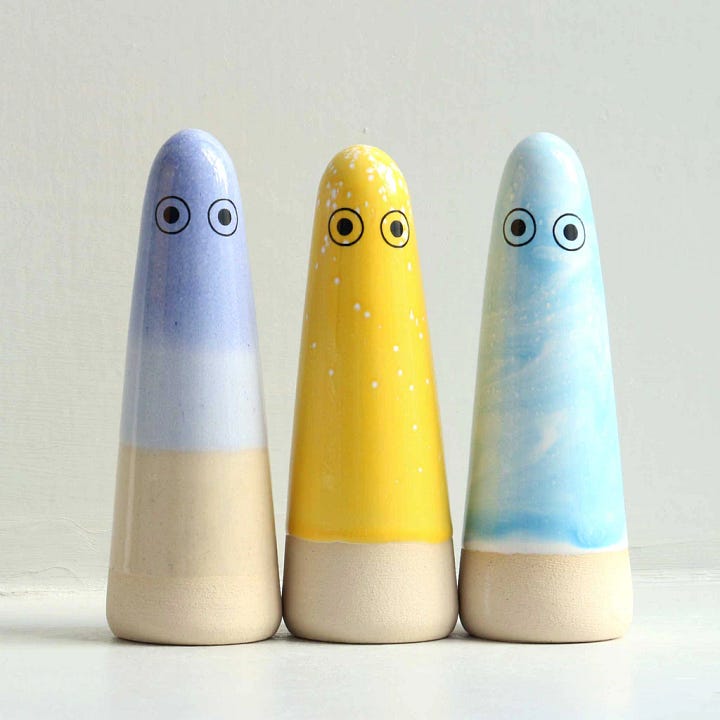
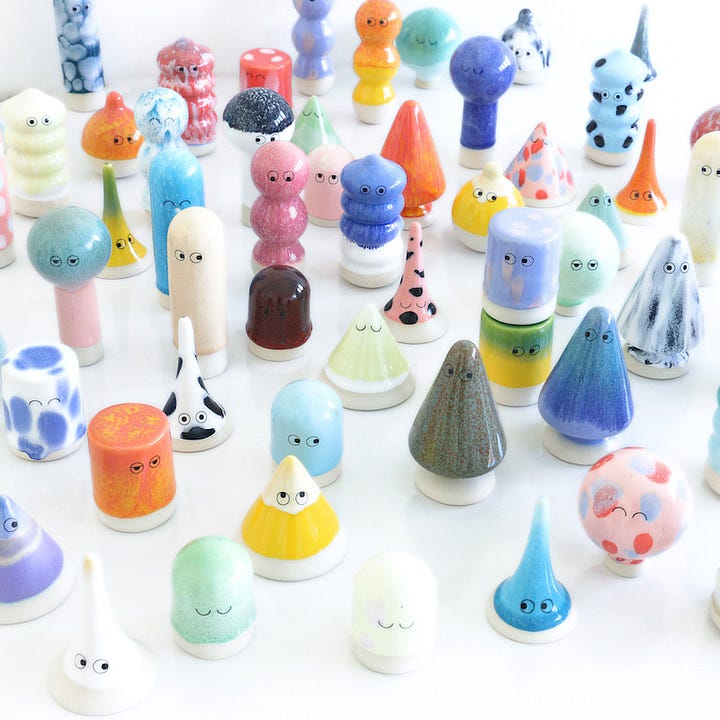
Anders Arhoj is a trained graphic designer who first started working on children’s TV shows in Denmark. In 2005, Arhoj quit his job and moved to Japan to study the language. There he was first exposed to Japanese ceramics - the rustic clay, handmade marks, and exposed imperfection which were the opposite of the minimalist Scandinavian pottery he knew. Upon returning to Denmark, Arhoj explored the world of clay and pulled inspiration from blending the two cultures. His first object was the Ghost, a simple earthenware cone with colorful glazes and a set of eyes. Cute, quirky, and playful, the Ghost was first featured in at a design fair in Denmark in 2011, quickly rising to popularity. The next year, Arhoj started his namesake studio creating objects with simple but expressive faces, including the Familia series. Familia was inspired by the ideas behind the Japanse Shinto religion which teaches that everything in nature has a soul: mountains, rocks, plants. Today, Studio Arhoj continues to blend Danish and Japanese art and ethos to create new objects infused with personality.
Aman Khanna | Claymen (India)
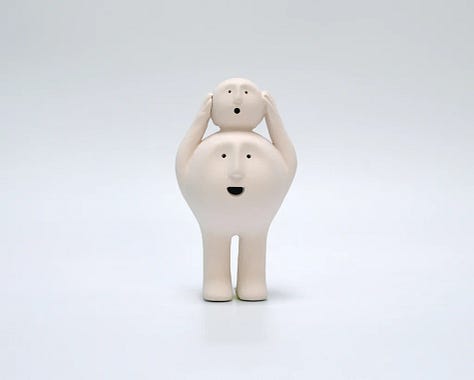

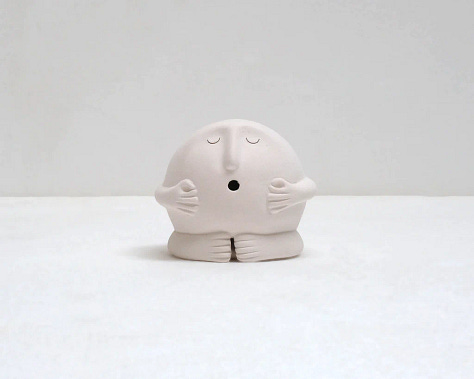
Aman Khanna and his studio, Claymen, are known for their contemplative clay sculptures. Khanna started the practice as a personal project to give life to the emotions and illustrations he had drew. His expressive sculpted figurines, aptly named Claymen feature a range of expressions - gratitude, curiosity, envy - in a simple, minimalistic form that are calming, peaceful, and wise. Born from Khanna’s own reflections of everyday people and their daily lives, the Claymen are cherished little observers.
El Dinosaurio is considered the shortest short story in the history of literature. It was written in 1959 by Guatemalan writer Augusto Monterroso and the full text is “When it work up, the dinosaur was still there.”. There are various interpretations of the story from being about how our past is always with us to the futility of humans in the face of larger forces.



